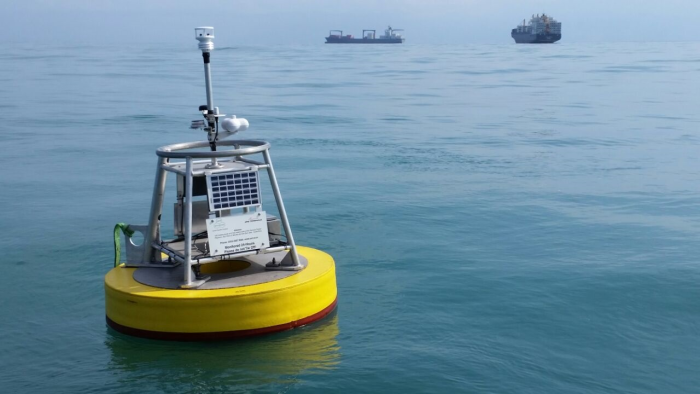




概要
リモンの既存の港は 30 年以上前に建設されました。コスタリカおよびラテンアメリカ全般での輸出入活動の増加に伴い、国内および国外への船舶の安定した交通量に対応するために、新しい最新式のコンテナ港を建設する必要がありました。浚渫、護岸の製作、恒久的な桟橋の支持など、現在および将来のすべての建設作業と並行して、陸上および海洋に関連するすべての環境条件を監視する必要があります。プロジェクトの建設段階では、海岸侵食と沖合の気象海洋パラメータを測定する必要があり、2016 年の春に開始され、3 年間の期間が予定されています。コスタリカは環境意識が非常に高い国です。このプロジェクトに関係するすべての関係者は、厳格な環境基準を遵守する必要があります。
解決
建設現場近くの海岸に気象観測所が設置され、気象海洋表面ブイ システムが設計、出荷され、新しい港湾施設から 1 km 沖合に配置されました。海面の完全な気象データ (風速と風向、気圧、気温、相対湿度) と水柱流の速度と方向、濁度は、CR6 データロガーによって 1 時間ごとにサンプリングされ、そのデータは地域の携帯電話ネットワークを介して海岸に送信されます。
水柱流の速度と方向は、ブイに取り付けられた Teledyne RD Instruments (TRDI) の音響ドップラー流速計 (ADCP) で測定されました。濁度は、ClearSensor テクノロジを搭載した Campbell Scientific OBS501 スマート濁度計で測定されました。別の TRDI ADCP がブイ システムの近くに別途配置され、波のスペクトル (高さ、周波数、方向) を収集しました (自己完結型データ、非リアルタイム)。ブイ データは、サンノゼにあるクライアントの本社で受信され、すべての関係者に公開されて表示されます。両方のオフショア システムは、4 か月ごとに保守されます。
結果
2016 年 3 月、モインの新港建設における環境モニタリングのための沖合計画が策定されました。輸送、構築、テスト、海上準備のすべてのロジスティクスが完了すると、システムはプロジェクトの作業船 MAGGIE-M に積み込まれ、配備のために沖合に運ばれました。水深は浅く (16 m)、桟橋からわずか 1 km です。配備は桟橋から桟橋まで 1 時間もかからず完了し、完全に成功しました。天候は完璧で、風はなく、海は穏やかでした。
プロジェクトリーダーのスマートフォンにインストールされた Campbell Scientific LoggerLink アプリにより、ウェットデータの送信がすぐに確認されました。すべてのパラメータが計画どおりに取得されました。プロジェクト担当者がこの地域を離れる前にすべてが順調であることを確認するために、さらに数日間監視が行われました。データは毎日報告され続けました。ADCP データは 7 月の復旧時に手動でダウンロードされます。
まとめ
監視プロジェクトの初期段階の計画にほぼ 1 年を費やした後、すべてが大成功しました。CR6 データロガーと、OBS501 および ADCP を含むすべてのセンサーは完璧に機能し、この記事の執筆時点でも引き続きその状態が続いています。ブイ システムは RDSEA 設計で、ユタ州ローガンの Campbell Scientific、コスタリカのサンノゼにある子会社の Campbell Scientific Central Caribe、および Teledyne RD Instruments との提携により、このプロジェクトは完了しました。
ケーススタディの概要
アプリケーション
建設プロジェクト中に沖合の気象海洋パラメータを測定するためのブイシステムを展開場所
モイン、リモン州、コスタリカ(カリブ海)使用製品
CR6 OBS501 LoggerLink寄稿者
Rick Cole, RDSEA International参加団体
APMターミナル計測項目
海面気象(風速と風向、気温、気圧、湿度、水柱流、海面温度、濁度など)PDFで見る